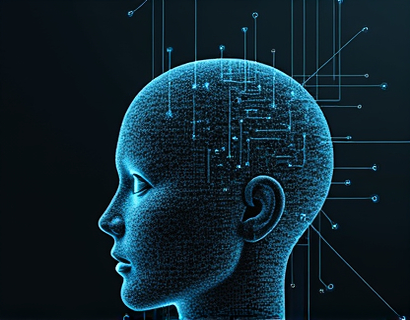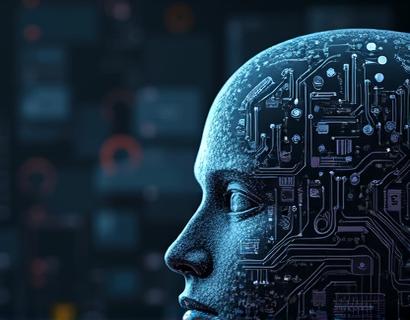UX Design Trends 2025: Mastering Digital Transformation with Expert Strategies and Insights
In the rapidly evolving landscape of digital design, staying ahead of the curve is crucial for success. The year 2025 brings a new set of UX design trends that are reshaping the way we approach digital transformation. This comprehensive guide delves into the latest expert strategies and insights, providing practical tips to elevate your UX design expertise and transform your digital projects. Whether you are a seasoned professional or just starting out, this article aims to enhance your understanding of user experience and drive user satisfaction.
Understanding the Core Principles of UX Design
The foundation of any successful UX design is a deep understanding of core principles. These principles include usability, accessibility, and user-centered design. Usability focuses on making products easy to use and navigate, ensuring that users can achieve their goals efficiently. Accessibility ensures that digital products are usable by people with a wide range of abilities and disabilities. User-centered design places the user at the heart of the design process, considering their needs, behaviors, and motivations.
In 2025, these principles are more critical than ever. With the increasing diversity of devices and platforms, designing for usability and accessibility is not just a best practice but a necessity. User-centered design remains the cornerstone, as it ensures that the products we create resonate with real users and meet their expectations.
Personalization and Adaptive Interfaces
One of the most significant trends in UX design for 2025 is the rise of personalization and adaptive interfaces. Personalization involves tailoring the user experience to individual preferences and behaviors. This can be achieved through data-driven insights and machine learning algorithms that analyze user interactions and adapt the interface accordingly.
Adaptive interfaces take personalization a step further by dynamically adjusting the layout and content based on the device, context, and user behavior. For instance, a mobile app might present a simplified version of its features on smaller screens, while a desktop version offers a more comprehensive experience. This adaptability enhances user satisfaction by providing a seamless and relevant experience across different contexts.
Voice User Interface (VUI) Design
The proliferation of smart speakers, virtual assistants, and voice-enabled devices has propelled VUI design to the forefront of UX trends. In 2025, designing for voice interactions is no longer a niche but a mainstream consideration. VUI design requires a different approach compared to traditional interfaces, focusing on natural language processing, conversational flow, and context awareness.
To create effective VUI designs, consider the following strategies: Keep commands simple and intuitive, use clear and concise language, and provide feedback to the user to confirm actions. Additionally, integrating voice with other interaction modes, such as touch or gesture, can create a more robust and flexible user experience.
Inclusive Design and Diversity
Inclusive design is a critical trend in 2025, emphasizing the importance of creating products that are usable by as many people as possible, regardless of their abilities, cultures, or backgrounds. This approach goes beyond accessibility by considering a wide range of user characteristics and scenarios.
To implement inclusive design, conduct user research that includes diverse participants. Use this research to inform design decisions and create personas that represent a broad spectrum of users. Additionally, test your designs with a diverse group to identify and address potential barriers. Inclusive design not only broadens your user base but also fosters a more equitable digital world.
Micro-Interactions and Feedback
Micro-interactions are small, focused interactions within a larger system that provide immediate feedback to the user. In 2025, these subtle yet powerful elements are becoming increasingly important in UX design. Micro-interactions can enhance the user experience by making interactions feel more responsive and satisfying.
Examples of micro-interactions include loading animations, form validation messages, and notification badges. These elements should be designed to be intuitive and non-intrusive, providing just the right amount of feedback to guide the user without overwhelming them. By incorporating thoughtful micro-interactions, you can create a more engaging and user-friendly experience.
Dark Mode and Color Contrast
The trend towards dark mode and improved color contrast continues to gain momentum in 2025. Dark mode, which uses a dark background with light text, is preferred by many users for its reduced eye strain and better battery life on OLED screens. Implementing dark mode in your designs can significantly enhance user comfort and satisfaction.
Color contrast is another crucial aspect of UX design. Ensuring sufficient contrast between text and background colors improves readability and accessibility. The Web Content Accessibility Guidelines (WCAG) provide specific ratios for text and background contrast, which should be adhered to. Tools like contrast checkers can help ensure compliance and create a more inclusive user experience.
Performance and Load Times
In an era where user attention is scarce, performance and load times are paramount. In 2025, optimizing the performance of digital products is not just a technical requirement but a key factor in user satisfaction. Slow load times can lead to higher bounce rates and a negative user experience.
To improve performance, focus on optimizing images, minifying code, and leveraging browser caching. Implement lazy loading for images and content that is not immediately visible. Use performance monitoring tools to identify and address bottlenecks. A fast and responsive product not only enhances user satisfaction but also improves search engine rankings.
AI and Machine Learning in UX Design
The integration of AI and machine learning in UX design is a transformative trend for 2025. These technologies can analyze vast amounts of user data to provide insights and automate design processes. For example, AI can help in creating personalized recommendations, predicting user behavior, and generating design prototypes.
To leverage AI in UX design, start by identifying areas where automation can improve efficiency, such as content recommendation systems or automated A/B testing. Use machine learning models to analyze user data and derive actionable insights. However, it's essential to maintain a human touch, ensuring that AI enhances rather than replaces the design process.
Sustainability and Ethical Design
Sustainability and ethical design are emerging as important considerations in 2025. As users become more aware of the environmental and social impact of digital products, designers must adopt practices that minimize harm and promote sustainability.
This includes optimizing for energy efficiency, reducing digital waste, and considering the lifecycle of digital products. Ethical design involves being transparent about data usage, respecting user privacy, and avoiding manipulative design tactics. By integrating sustainability and ethics into your design process, you can create products that are not only functional but also responsible and trustworthy.
Conclusion
As we navigate the UX design landscape in 2025, embracing these trends and strategies is essential for digital transformation. By focusing on personalization, adaptive interfaces, voice design, inclusive practices, micro-interactions, dark mode, performance optimization, AI integration, and ethical considerations, you can elevate your UX design expertise and create impactful digital products. These expert strategies and insights will help you stay ahead of the curve and drive user satisfaction in an increasingly competitive digital world.











































